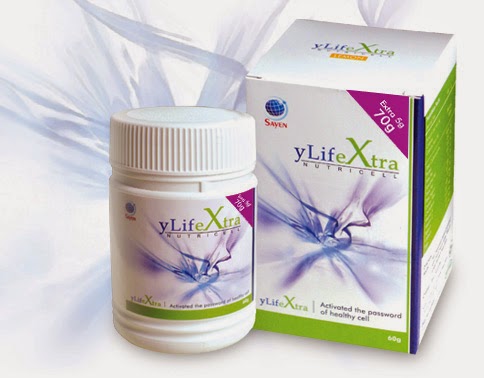There is no life without Saccharides
All cells in the human body, including brain cells, liver cells, kidney
cells,
eye cells, skin cells, immune cells, all communication between
cells and
many other are relying on the [Saccharides] to function.
[Saccharides] is essential nutrients to human body.
________________________________________
Official Certification:

Ingredients
【1】 15 types of active concentrated polysaccharide complex (1,3;1,6)
 |
| 1. Antrodia Camphorata |
|
 |
| 2. Ganoderma Lucidum |
|
 |
| 3. Agaricus Blazei Murrill |
|
 |
| 4. Schizophyllum Commune |
|
 |
| 5. Agrocybe Aegerita |
|
 |
| 6. Phellinus Linteus |
|
 |
| 7. Cordyceps Sinensis |
|
 |
| 8. Clavulina Cristata |
|
 |
| 9.
Coriolus Versicolor |
|
 |
| 10. Pleurotus Eryngii |
|
 |
| 11. Lentinula Edodes |
|
 |
| 12. Grifola Frondosa |
|
 |
| 13. Tricholoma Matsutake Mushroom |
|
 |
| 14. Marine Algae Polysaccharides |
|
 |
| 15. Saccharomycetes |
|
___________________________________________________________________________________________
【2】 8 types of Monosaccharides
| Fucose |
|
| Introduction: |
It is a type of hexose
(a monosaccharide with six
carbon atoms), also known as 6-Deoxy-L-galactose. It can also be seen
as a type of methyl pentose. Fucose is the composition of
oligosaccharide chain in glycoprotein, and is prevalent in various types
of cell surface on plasma membrane. Fucose is less hydrophilic (
attracted to water and readily absorbed by water) than other
monosaccharides. Thus, it is more hydrophobic (incapable of being
dissolved by water). |
| Function: |
Regulates cell communication, stimulates brain development, improve immunity, is anti-inflammatory, and anti-cancer in nature. |
|
| N-acetyl Glucosamine |
|
| Introduction: |
It
is a type of fungi, algae and soft-bodied organism. Glucosamine is
derived from one of its important source, chitin polysaccharide monomer,
which occurs especially in the outer shells of shellfishes. It is
mainly used for tissue cultures and in the making of biochemical
reagents. |
| Function: |
Regulates cell communication, stimulates brain development; improve immunity, is anti-inflammatory and anti-cancer in nature. |
|
| Glucose |
|
| Introduction: |
Glucose,
referred to as dextrose, is one of nature's most widely distributed and
most important type of monosaccharide. Glucose plays an important role
in the biological field as an energy source for the living cells and as
an intermediate need for cell metabolism. It has a wide range of
applications in the manufacture of candy and pharmaceutical products. |
| Function: |
Regulates cell communication, improves immunity, accelerate calcium absorption, and stimulates the brain function. |
|
| N-acetyl Galactosamine |
|
| Introduction: |
N-acetyl
galactosamine carbohydrates plays a very important role in the
formation of blood group A antigens. It is also one of the
monosaccharides required for cell communication. The majority of this
monosaccharides are concentrated in the sensory nerve structures of
humans. |
| Function: |
Regulates
cell communication, is anti-tumor in nature, enhances the immunity, has
a protective effect on the nerves.
|
|
| Galactose |
|
| Introduction: |
Galactose
is a type of monosaccharide, which can be found in dairy products or
sugar beet. It is classified as an aldose or a hexose. It is usually
present in the form of D-galactosidase in the brain and nerve tissues.
It is an important component of various glycoproteins. |
| Function: |
Enhances
immunity, is anti-cancer and anti-rheumatic in nature, promotes healing
of wounds, is anti-inflammatory, and hinders the absorption of
cholesterol, and maintains the balance of intestinal bacterial
production. |
|
| N-acetylneuraminic Acid |
|
| Introduction: |
N-acetylneuraminic
acid is a type of polysaccharide. It is widely distributed as secretion
on the surface of animal cell or in glycoprotein and glycolipid sugar
composites that are found outside the cells. |
| Function: |
Regulates the immune function, is antibacterial, is an anti-virus, enhances the memory, improves behavior. |
|
| Mannose |
|
| Introduction: |
It
is a type of monosaccharide and composed from a variety of
polysaccharides. There are small amounts of free mannose in fruits, such
as the pith or insides of orange peels, peaches and apples; while ivory
palm, yeast, red algae, globulin, ovomucoid, and tubercle bacillus are
known to contain D-mannose polysaccharide. |
| Function: |
Is
anti–inflammatory, aids in tissue regeneration, is resistant to
infection (especially for urinary tract infections), is antibacterial,
anti-virus, and anti-tumor in nature.
|
|
| Xylose |
|
| Introduction: |
Xylose
is a component of the composite xylan and xylan is widely present in
plants. Xylose is a variety of the glycoprotein sugar with chain and
serine(or threonine)connection unit. So far, xylose has yet to be found
to exist in its free and natural state. |
| Function: |
Is antibacterial and anti-cancer in nature, promotes the growth of probiotics. |
|
_______________________________________________________________________________________________________________________________________________________________________________________
|

















